This article was medically reviewed by Allan Evangelista, MD. Dr. Evangelista is a Foot and Ankle Surgeon at Mountaineer Orthopedic Specialists in Morgantown, West Virginia. He graduated from Temple University School of Medicine in 2002 and completed his fellowship at Sarasota Orthopedic Associates in 2006.
wikiHow marks an article as reader-approved once it receives enough positive feedback. This article received 50 testimonials and 91% of readers who voted found it helpful, earning it our reader-approved status.
This article has been viewed 2,327,236 times.
A toe fracture is a common injury that can be caused by dropping something on your foot, kicking something, or just severely stubbing your toe. You can hurt your toe without actually breaking it, so sometimes it’s tough to determine how serious the injury is. Luckily, there are several ways that you can find out whether or not your toe is broken.
Steps
Examining the Toe
-
1Assess your pain level. If your toe is fractured, it's going to hurt when you put your weight on it, or when pressed on. You will probably still be able to walk, but moving around might make the pain worse. The presence of pain does not necessarily mean that the toe is broken, but persistent pain can be an indication of a fracture or break.[1]
- If putting weight on your toe is excruciatingly painful, you might have a bad break. In this case, you should see a doctor right away. Minor fractures aren't as painful, and may not need medical treatment.
- Tingling in addition to pain could indicate a fracture. See a doctor right away.
-
2Examine the size of your toe. Is it swollen? This is a common indication that you might have a fracture. If you merely stub your toe badly, it will throb for a while and then the pain will go away without swelling occurring. A fractured toe is very likely to swell.
- Place the injured toe near the corresponding healthy toe on your other foot. If the injured toe looks much bigger than the healthy toe, you might have a fracture.[2]
Advertisement -
3Look at the shape of your toe. When you compare your hurt toe to the corresponding toe on your other foot, does it look misshapen or out of joint? If so, you likely have a severe break and need to see your doctor right away. A minor fracture may not change the shape of a toe.
-
4Check for discoloration. Fractured toes, unlike stubbed toes, usually end up with bruising and discoloration. Your toe may look red, yellow, blue, or black. In addition, it may bleed. All these are indications that the toe may be broken.
- If you can see that the toe bone has broken through the skin, it's definitely broken, and you should see the doctor immediately.
-
5Touch the toe. If you can feel the bone moving inside, or if any movement in the toe feels odd (in addition to feeling painful!), then it is likely that the toe is broken.
-
6Know when to see a doctor. If the pain, discoloration, and swelling persist for more than a couple of days, you should go to the doctor. You will likely need an X-Ray to verify the break. In many cases, the doctor will tell you to stay off your toe and just let it heal. However, some severe breaks may require further medical intervention.
- If the pain is so severe that you can't walk on the toe, see your doctor right away.
- If the toe looks like it's pointing in the wrong direction or is otherwise badly misshapen, see your doctor right away.
- Seek emergency services if the toe is cold or tingling, or it turns blue due to lack of oxygen. [3]
Caring for a Broken Toe
-
1Care for your toe until your doctor's appointment. Fill a plastic food storage bag with ice cubes, wrap it in a dishcloth, and place it on the injured toe. Do this in 20-minute increments until you can get to the doctor. The ice will help reduce swelling and stabilize the toe. Keep your foot elevated as much as possible, and don't attempt to walk far on it.[4]
- Don't leave the ice in place for more than 20 minutes, as it may damage your skin if you leave it there too long.
- You can take an analgesic like ibuprofen or aspirin to ease the pain.
-
2Follow your doctor's orders. During your doctor's visit, the doctor will take an x-ray and then give you instructions on how to care for your toe. In some cases, the doctor will realign the bone. In severe cases, surgery may be needed to place pins or screws in the toe to keep the bones in place.
-
3Rest the broken toe. Don't do the activity that caused the injury in the first place and avoid other activities that place pressure on your toe. Light walking, swimming, or biking may be fine, but avoid running or playing contact sports for several weeks. Continue resting the toe for the amount of time prescribed by your doctor.
- When you're at home, keep your foot elevated to help with swelling.
- After several weeks of healing, gradually begin using your toe again, but don't overdo it. If you feel pain or stress, take a step back and rest your foot.
-
4Change your bandages if necessary. Most toe fractures and breaks do not require a cast; instead, the doctor will show you how to "buddy tape" your broken toe to the toe next to it. This keeps it from wandering out of place and getting reinjured. Ask your doctor or a nurse to show you how to properly change the tape and gauze every few days to keep the area clean.
- If you lose feeling in the taped toes or they change in color, the tape is probably too tight. Remove it immediately. Ask your doctor for guidance in reapplying the tape.
- Diabetics should not tape their toes. Instead, special flat-footed orthopedic shoes should be worn, as prescribed by your doctor.[5]
-
5Care for severe breaks according to your doctor's guidance. If your break is severe enough to require a cast, brace, or special walking shoes, you'll probably have to rest it completely for 6 to 8 weeks. Breaks that require surgery may have even longer healing periods. You may need to have several doctor's visits in the meantime to make sure it's healing properly.
- Be sure to follow the doctor's orders when caring for a severe injury. Ignoring doctor’s orders can cause an injury to take much longer to heal than necessary.
Things You'll Need
- Ice pack
- Tape and gauze
References
About This Article
If your toe hurts when you put pressure on it, and your pain is persistent, your toe may be broken. Compare your potentially broken toe to your healthy toes to see if it is swollen in size, misshapen, and/or an irregular color, such as red, yellow, blue, or black. If the pain, swelling, and discoloration persist for more than a couple of days, see your doctor to verify the break with an x-ray and get treatment. To get advice from our Medical reviewer on how to care for a broken toe, scroll down!
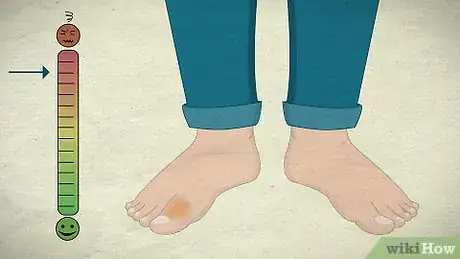


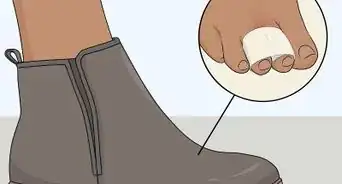



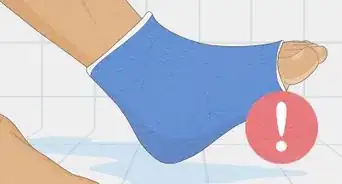

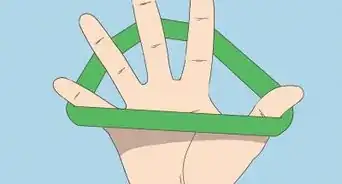
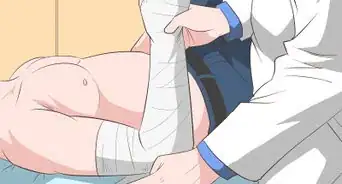
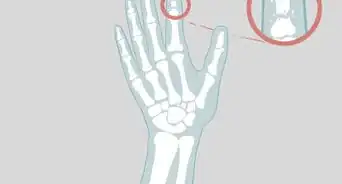


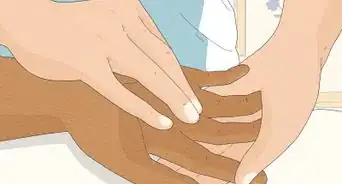












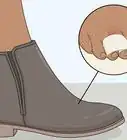




































Medical Disclaimer
The content of this article is not intended to be a substitute for professional medical advice, examination, diagnosis, or treatment. You should always contact your doctor or other qualified healthcare professional before starting, changing, or stopping any kind of health treatment.
Read More...